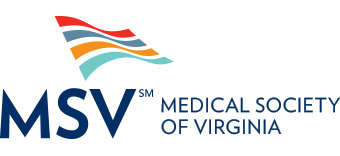Update from October 9, 2025
COVID SHOT CHANGE — The CDC and its panel of expert advisers quietly expanded access to Covid-19 vaccination during pregnancy, undoing an earlier recommendation from HHS Secretary Robert F. Kennedy Jr. to stop recommending that pregnant women get the shots.
The CDC’s Advisory Committee on Immunization Practices voted in September to recommend that adults can choose to get the Covid shot after consulting with their providers, also known as shared clinical decision-making. The panel didn’t specifically vote on whether the shot should be administered during pregnancy, yet the vote appears to encompass pregnant women, according to an update this month on the CDC website that reflects the new guidance.
That development surprised some, including legal experts.
“Covid-19 vaccine in pregnancy had been discussed initially — ACIP recommended them — then the secretary took that back,” said Dorit Reiss, a vaccine law expert at the University of California’s law school in San Francisco.“Under these circumstances, if they were going to change the decision about pregnancy, I would have expected them to address it expressly, since it was changed expressly [by Kennedy].”
It’s unclear whether all 12 panel members, handpicked by Kennedy, were aware that the move would undo his decision. Much of the panel’s two-day September meeting in Atlanta was marked by confusion as recently appointed members struggled with the procedures. ACIP Chair Martin Kulldorff did not immediately respond to a request for comment, nor did a spokesperson for HHS.
Why it matters: The new guidance for adults means that pharmacies can administer the vaccine to pregnant women, and almost all insurers must cover the shots with no cost-sharing — guaranteeing expanded access for people who want to be vaccinated.
Vaccinating children under 6 months against Covid-19 isn’t recommended, so many providers see vaccination during pregnancy as a key tool for protecting vulnerable infants from the infection.
The panel’s Covid recommendation contradicts what many public health experts had expected from the September meeting. Kennedy fired all the panel’s members in June, and some new members have argued that Covid vaccines aren’t safe, spurring concerns that the panel would vote to drastically narrow access to the shots.
Update from October 8, 2025
CDC Recommends COVID-19 Vaccination After First Consulting A Clinician
The Washington Post reports the CDC on Monday “announced it had officially recommended updated coronavirus vaccines, creating a new system to get a shot that’s slightly more complicated than in previous years.” The agency “approved a federal vaccine advisory panel’s recommendation last month urging people to first consult a clinician before getting the coronavirus shot. The move marked a shift from previous CDC policy that made vaccines widely available to nearly all Americans without question or cost.” Specifically, the CDC vaccine panel “recommended the shots to people regardless of age or health conditions under the concept of ‘shared clinical decision-making,’ meaning people should first consult a medical professional.”
CNN reports that prior to “the finalized recommendation this year, access to Covid-19 shots has differed from state to state as pharmacies and providers navigated new federal vaccine policies.” The signoff also comes “later than usual for the fall respiratory virus season. With the recommendation, the government can finally distribute Covid-19 vaccines through its Vaccines for Children program, which provides free inoculations to about half of US children.” HHS stated it was bringing back “informed consent” ahead of vaccination.
NBC News notes that “prior to the CDC’s announcement, 26 states (mostly blue states with Democratic governors) had already set their own Covid shot guidance to keep access as broad as possible, according to KFF, a nonpartisan health policy research group. The result is a complex hodgepodge of Covid vaccine policies nationwide.”
Update from September 23, 2025
Advisory Committee On Immunization Practices Votes To Limit Access To COVID-19 Vaccines
The New York Times reported the Advisory Committee on Immunization Practices “voted unanimously on Friday to further limit access to Covid vaccines,” recommending “that adults 65 and older receive the shots only after discussing the potential benefits and risks with a health care provider.” The panel also said that everyone between 6 months and 64 years old could get the vaccine after consulting with a provider. The two decisions “raise questions about whether Americans can continue to walk into their neighborhood pharmacies for routine vaccinations or whether in some states they will first need a doctor’s permission.” While the approved recommendations “were less restrictive than many had expected,” they will still “make it more difficult for pharmacists in some states to administer the shots to older adults.”
The AP reported that in addition to “declining to recommend” COVID-19 vaccines to anyone, the panel “also urged the CDC to adopt stronger language around claims of vaccine risks, despite pushback from outside medical groups who said the shots had a proven safety record from the billions of doses administered worldwide. The divided panel narrowly avoided urging states to require a prescription for the shot.” The actions come after the FDA had already “placed new restrictions on this year’s shots from Pfizer, Moderna and Novavax, reserving them for people over 65 or younger ones who are deemed at higher risk from the virus.”
Reuters reported ACIP “earlier on Friday abandoned a vote that would have delayed the first hepatitis B vaccine dose for newborns, giving a temporary win to doctors, public health experts and patient advocates who had decried the move.” Meanwhile, AHIP, the insurance industry lobbying group, “said it stood by its comment earlier this week that it would cover COVID vaccines through 2026.”
Update from September 11, 2025
Below and linked here is the latest provider letter from VDH Health Commissioner, Dr. Karen Shelton. The standing order that has been put in place expands the ability for pharmacists to administer COVID vaccines to adults 18-64 years of age who do not have an underlying health condition. Underlying condition has not yet been defined. There are currently no guidelines for anyone under 18 years of age. There will be a CDC meeting held this Wednesday (9/17/25) where more guidelines will be put forth.
Please ensure that you stay current as things will continue to change. MSV will keep our news page as current as possible, but please be sure to check the Health Department site regularly as well. If you have any questions, please contact the MSV Government Affairs Team at [email protected].
Dear Colleague,
This letter provides important updates about the 2025–2026 COVID-19 vaccine.
On August 27, the U.S. Food and Drug Administration (FDA) approved updated 2025–2026 COVID-19 vaccines for adults 65 years of age and older and certain individuals under 65 years of age who have at least one underlying condition that puts them at high risk for severe outcomes from COVID-19. The Advisory Committee on Immunization Practices (ACIP) will meet on September 18–19, 2025. It is anticipated that the ACIP will discuss recommendations for the 2025-2026 COVID-19 vaccine and offer its recommendations to the Centers for Disease Control and Prevention (CDC) to include its Immunization Schedule. Until then, challenges exist for patients seeking to obtain the COVID-19 vaccine from a pharmacy. Therefore, I have issued a Statewide Standing Order authorizing pharmacists to administer the COVID-19 vaccine to adults consistent with FDA indication.
This statewide standing order will facilitate adults accessing the COVID-19 vaccine within pharmacies across the Commonwealth. Minors and adults between 18 and 64 who do not have an underlying condition should consult with their healthcare provider. Currently, a pharmacist may not administer a COVID-19 vaccine to these populations without a healthcare provider’s medical authorization.
Thank you for partnering with VDH to keep Virginians safe and healthy.
Sincerely,
Karen Shelton, MD
State Health Commissioner


